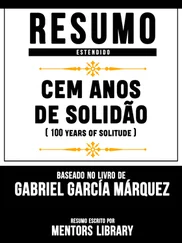I take the RUE DU BAC in front of me. Where I start off by crossing a 68, going the wrong direction. The stores here are very elegant; I pass galleries, monasteries, pastry shops in a style different from that of Korb & Schlag, but very chic as well.
Here, VALMY has its IMPASSE. I cross it and stop to read the plaque, on 46 Rue de Bac: “Roger Connan, shot by the Germans on August 20, 1944, at the age of 28.”
At the intersection, I take BOULEVARD RASPAIL. And I choose to walk on the left side, in the shade, which means I’ve really given up catching a bus. On the median, the chestnut trees are not yet in bloom. But that can be sung—“ April in Paris, chestnuts in blossom… ” After the German Romantic poet, Americans in Paris. Which evokes the Liberation, Mireille, her endless wait. I didn’t know Mireille, she had been dead for several years when Pierre told me about her, told me her story. She worked as a librarian her whole life, with specializations in German and Italian poetry, as well as the literature about the camps, the concentration camps, the extermination camps. And she always lived alone. With lots of generosity, Pierre passed all of her stories on to me. Reading letters that weren’t addressed to me, intimate diaries hidden at the bottom of linen dressers, agendas, drafts — that’s my job. Opening boxes of archives, my heart pounding in my chest, that, too. And did my heart pound less for Pierre’s stories than for those old dusty trophies? I cross the boulevard and, in front of the Bank of France, I read another plaque. At this location, an unknown member of the FFI (French Forces of the Interior) died for France on August 21, 1944. Across the street, the Hotel Lutetia — after housing the headquarters of the Abwehr, a German intelligence service, then after taking in the scant survivors returning from the camps — has long been restored to its original purpose. I cross the street again to read the plaque, which I’ve already come to read several times and which always mentions joy, anguish, and pain. It’s impossible here not to think, once again, of Mireille Duvivier. I keep on walking. I can’t imagine Mireille in 1945. The private events, like the one hundred twenty-one days of Mireille and André’s story, do they not form a sort of chain that holds the threads together — the very fabric of history? The barking of a dog, to which my mind probably wasn’t headed, brutally brings me back to today, April 25, 2013, the day of Pierre Meyer’s burial. I’m now in front of the “modern” building of the EHESS, the School for Advanced Studies in the Social Sciences, which replaced the Cherche-Midi prison. I know that Dreyfus was incarcerated there in 1894, and that during the occupation, it was used for all sorts of prisoners and members of the Resistance, with forty per cell. I’m walking in the very city Kürz visited in 1942. The beautiful building now hidden by scaffolding once served as a recruitment center for the Service du Travail Obligatoire (STO), which subjected French workers to forced labor in Nazi Germany. In passing, I see the window of the historic bookstore, but I don’t stop. I don’t really have the heart to go look at tables of books. I remember the intense nausea that came over me when I unexpectedly discovered a “scientific biography” of Georges C. Collaborators are in vogue at the moment. I saw all kinds of books, books by sons and grandsons, some courageous, others scandalous. And piles of books on Céline, who was also a World War I veteran.
RUE NOTRE-DAME-DES-CHAMPS. The metro. Notre-Dame des Champs, our lady of the fields, pray for us. And Saint Marguerite as well. Marguerite M. was a saint. I’ve realized that I probably can’t comprehend the true nature of the relationship between the Catholic nurse and the broken face, the exchange of pain and sacrifice… and why not love, pure and simple?
CARREFOUR VAVIN. Rodin’s statue of Balzac is found here. After Stendhal… I’m getting a literature lesson as well this morning. This is a novel, from end to end. Fiction. But “ all is true ,” like Balzac said, rightly, at the beginning of Père Goriot .
On BOULEVARD MONTPARNASSE. The café terraces that, as in Saint-Germain-des-Prés, were once fashionable, are now full of tourists. The words that can be “as murderous as a gas chamber,” as Simone de Beauvoir wrote, maybe in one of these cafés, murderous words, answering terrifying numbers. Multiplying 8 Reichsmarks by 40 years then by 365 days to get 116,800 Reichsmarks has nothing particularly terrifying about it; it’s the addition of the words “mentally ill patient” and “cost” that makes the calculation murderous.
RUE DELAMBRE. Because Delambre was an astronomer. Lots of astronomers have streets named after them in this arrondissement. And the Jewish astronomer who was still working at the Observatory when M. talked to Kürz about it in June of 1942? He died at Auschwitz a year later. I must confess that at this exact moment, I can’t remember his name. It’s a tiny ripple of “the irresistible tide of forgetfulness” that the philosopher Jankélévitch spoke about. That overwhelms everything. Despite the ceremonies filled with grandeur and emotion, with brass bands, military parades, and flags, like the one for M.’s one-hundredth birthday, then, three years later, perhaps without fanfare, for his funeral at the church of Saint-Louis des Invalides, almost eighty years after his marriage at Saint-Philippe-du-Roule. The Croix de Guerre and the Grand Croix of the Légion d’Honneur, this time on the coffin, official figures, speeches, flags. The Association of the Former Students of the École Polytechnique was present, Pierre told me. Once more, M. was treated better than Gorenstein. It’s definitely too late, I’m definitely too close to my place now to get a bus. I keep walking down the boulevard.
Now, opposite the CIMETIÈRE MONTPARNASSE. Cemetery to cemetery, poet to poet… Here rests Robert Desnos, the night watchman of the Pont-au-Change, another Robert le Diable. He died, too, “there where our century’s destiny bleeds”… How beautifully put, words again, an exquisite formulation for the unspeakable. I pass the building where Louis Klein lives, the man who told Mireille Duvivier about André Silberberg’s death in 1945, he who shared a corner of a freight car with André and who later wrote a dreadful little book, in which he simply described what happened. I had come here to see him, along with Pierre Meyer, whom I had picked up from the other side of Paris. I brought my notebook, like always. He was handsome, cheerful, and courteous. He was ninety-two years old. He showed us the pale blue number on his forearm. A bit stupidly, I wrote this number down. He told me, “Yes, André Silberberg, I remember him, of course. But is he dead?” We caused him to suffer by telling him about André Silberberg’s death and the terrible conditions in which it happened. Which we knew from his own mouth, from the book he wrote. He started singing us a song by Schumann,
Das Lied ist aus
Auch ich möcht mit dir sterben
“The song is over / I would also like to die with you.” A poem by Heine, once again. Then, interrupting himself: “but what were we talking about? André Silberberg, yes, of course, I remember him very well. But is he still alive?” The irresistible tide of forgetfulness had already overwhelmed him. I closed my notebook, I stopped my recorder, and we stayed there, Pierre and I, talking with him.
I come to the PAVILLON DE LA BARRIÈRE D’ENFER. Where the entrance to the catacombs is located. It’s already late, visiting hours are over, the usual line of tourists has dissolved.
I read the plaque at the PLACE DU COLONEL-ROL-TANGUY. And I think about all these plaques, about Roger Connan, about the unknown member of the FFI, about Danielle Casanova, about Pierre and the liberation of Paris, about Mireille and the Hotel Lutetia, about the innumerable names who will never have a story other than that of their disappearance. And about Pierre’s great-grandson, about the children who play on the statues in the Tuileries gardens, about my daughter. In front of my house, I punch in the code, another number, I climb the six floors, I open the door. Inside, no one is waiting for me: it’s not Wednesday, it’s not spring break, and my daughter, my best beloved, is at her mother’s. I take off my shoes covered with the dust of the Tuileries paths, I sit down at my table, facing the window and Paris, I make a little space amongst my mess, I push a red binder and some blue and gray notebooks full of notes out of the way, I open a pad of lined paper, and, with “desperate but intermittent protestations of memory,” I start to write:
Читать дальше












